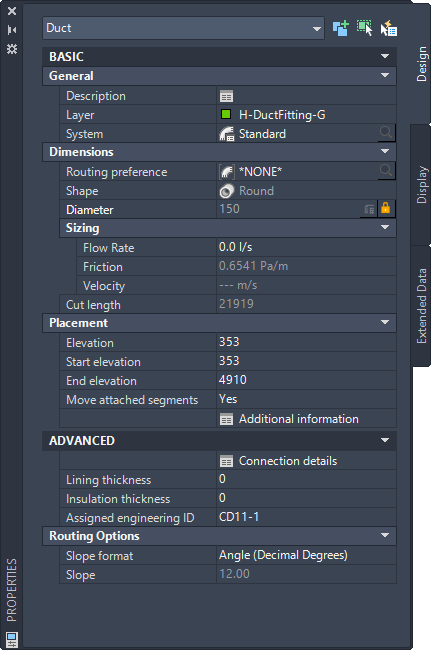Duct sizes are calculated using either the equal friction method or constant velocity method. For more information, see Specifying a Calculation Method for Duct Sizing.
The calculations for duct friction losses are based on the Darcy and Altshul-Tsal equations described in the 2001 ASHRAE Fundamentals Handbook, Chapter 34, as follows:
- Duct friction loss for round, rectangular, and oval ducts is calculated using equation 19.
- Duct friction factor for round, rectangular, and oval ducts is calculated using equation 21.
- Reynolds Number is calculated using equation 23.
- Equivalent round duct diameter for a rectangular duct is calculated using equation 25.
- Equivalent round duct diameter for a flat oval duct is calculated using equations 26, 27, and 28.
- To size friction for the rectangular or oval duct, the calculations use the equivalent round duct diameter and its velocity.
- The dialogs for Add Ducts and Modify Duct list the actual velocity for the selected CFM and duct size, not the velocity used in the duct friction calculations. The actual velocity is displayed for duct fitting and acoustical analysis.
- When a CFM is not displayed in the dialogs for Add Ducts or Modify Duct, the friction or velocity values shown are the values specified in the Design Parameters for the Duct System Definition. To specify design parameters for the Duct System Definition, see Specifying a Calculation Method for Duct Sizing.
The Properties palette shows a value next to the Velocity field indicating that duct size was calculated using the constant velocity method.

The Properties palette shows the fixed parameter value for velocity used to calculate duct size.

Duct sizes are calculated based on the flow values assigned to all outlet devices detected in the system. For more information on assigning flow values, see Configuring Mechanical Parts for Analysis.